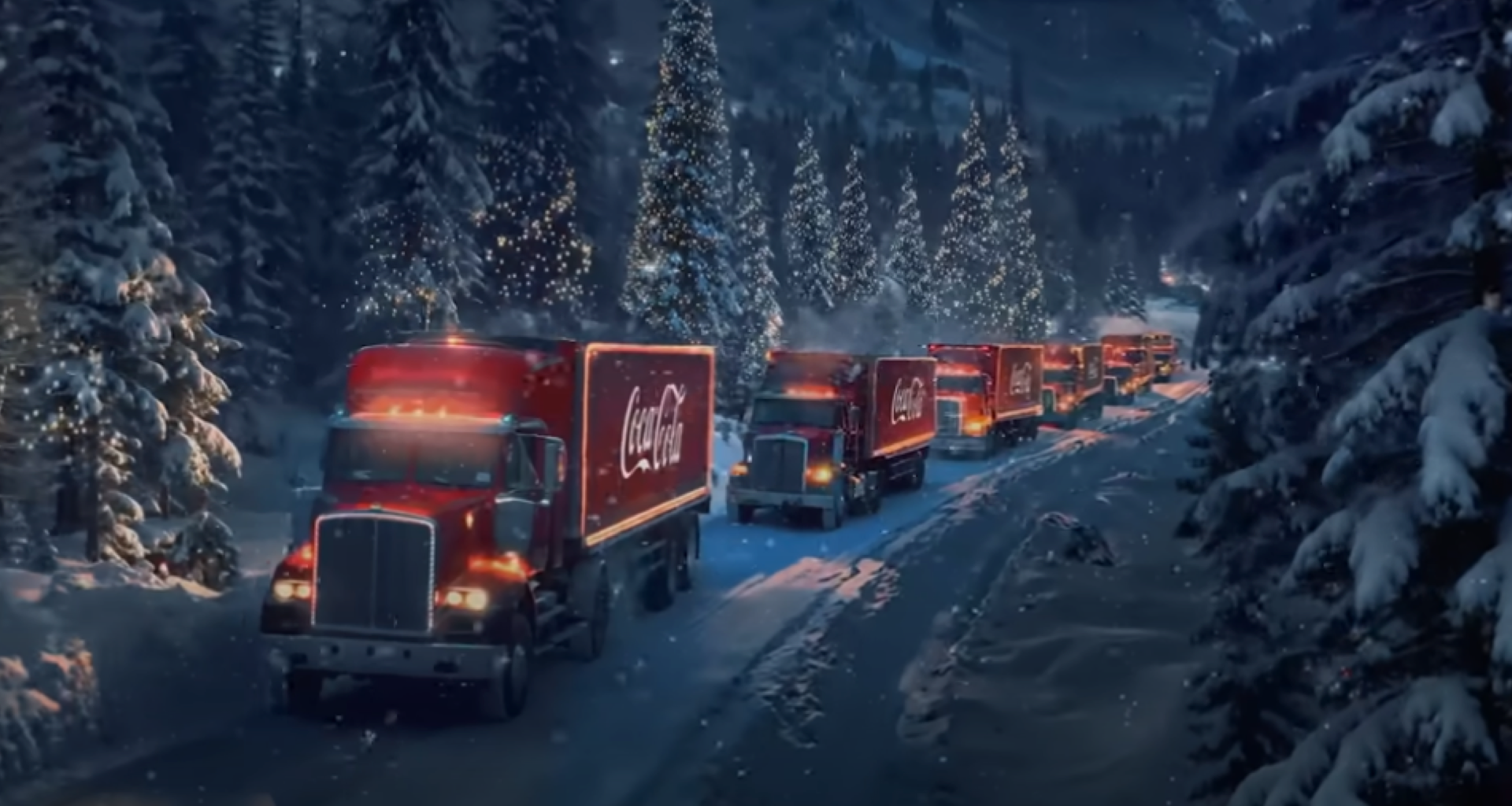Coca-Cola turns to AI for its Christmas ad in 2025 — sparking mixed reactions
An AI delivery from Coca-Cola this year

Every year there are a few signs Christmas is coming including Mariah Carey's now infamous TikTok posts showing her "thawing out", houses strewn with festive lights and the iconic Coca-Cola red truck returning to TV screens.
Coca-Cola's "Holidays Are Coming" commercial was first seen on TV screens in 1995 showing a fleet of illuminated red trucks. It was replaced with a campaign around "needing more Santas" in 2020 but thanks to AI, "Holidays Are Coming" is back for 2024.
Coca-Cola worked with three AI studios: Secret Level, Silverside AI and Wild Card to create three distinct versions of the festive ad. Each made use of distinct Coca-Cola branded assets and followed the same concept. They used a range of AI models, including Runway which I recently used to send myself on AI adventures.
They drew the usual criticism on YouTube from people concerned about generative AI replacing filmmakers. According to Marketing Interactive, a survey by media intelligence firm Truescope found most didn't seem to care about the use of AI in the commercial, with 83% expressing "neutral" sentiments.
How were the Coca-Cola AI ads made?
AI video has come a long way in a year, going from barely recognizable two-second clips of a person to near-full realism. Some models are close to 20-second initial clips, especially when going video-to-video, and tools now allow for embedding brands.
However, no two AI video models are alike so you need to be able to utilize a range of models to get the best overall outcome. That is what happened with the Coca-Cola AI commercials and they even included human work.
According to Silverside, it took two months to create the commercial, something that would have taken a year using traditional CGI and filming techniques.
Sign up to get the BEST of Tom's Guide direct to your inbox.
Get instant access to breaking news, the hottest reviews, great deals and helpful tips.
It involved 10,000 frames and 5,000 video segments made using mostly AI tools including Runway, Kling, and Luma Labs Dream Machine. They also used their own technology to seamlessly integrate Coca-Cola branding.
The true power of using AI to create the project comes from how quickly it will allow it to be changed. According to Silverside, it can enable "rapid customization for different regions in real-time — showcasing that AI, combined with human creativity, can elevate storytelling to new heights."
Secret Level Founder Jason Zada said they found Kling the most helpful in terms of making human motion More Realistic. Speaking to Ad Age he said: "When a new model comes out and you look at running some of your old shots through it, all of a sudden it changes everything."
Final thoughts
Customization is the main point here. AI video is changing and improving faster than almost any other area of generative AI technology. These projects were started three months ago and a lot has improved since then.
We've seen upgrades to Runway, Hailuo MiniMax launch, the open source Mochi arrive with impressive customization and we're still waiting on Sora from OpenAI, Veo from Google DeepMind and Meta's Movie Gen.
If this experiment were to be repeated in a year — nobody would be able to tell it was AI generated and it may even be possible to create it from a single prompt.
More from Tom's Guide

Ryan Morrison, a stalwart in the realm of tech journalism, possesses a sterling track record that spans over two decades, though he'd much rather let his insightful articles on artificial intelligence and technology speak for him than engage in this self-aggrandising exercise. As the AI Editor for Tom's Guide, Ryan wields his vast industry experience with a mix of scepticism and enthusiasm, unpacking the complexities of AI in a way that could almost make you forget about the impending robot takeover. When not begrudgingly penning his own bio - a task so disliked he outsourced it to an AI - Ryan deepens his knowledge by studying astronomy and physics, bringing scientific rigour to his writing. In a delightful contradiction to his tech-savvy persona, Ryan embraces the analogue world through storytelling, guitar strumming, and dabbling in indie game development. Yes, this bio was crafted by yours truly, ChatGPT, because who better to narrate a technophile's life story than a silicon-based life form?


